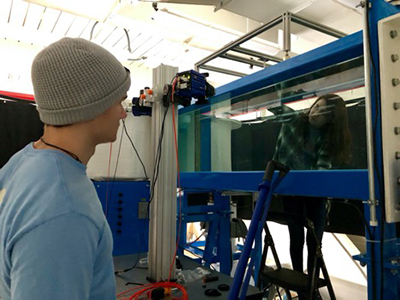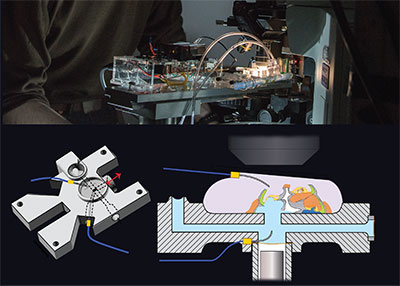Undergraduate Research Opportunities
Getting Started
The first step to working on a research project is getting to know the sort of research done within the department. Talk to with faculty and senior students, and visit the research and faculty pages to see what research is being done and by whom.
Students must have sophomore status or higher to work on department and independent research projects.
Compensation
Students taking one of the 39X-level of courses (Independent Study Courses) can get one to four credit hours, depending on the research required.
Students not taking one of these courses may get a research assistant's salary.
You cannot get both credit and salary for work on a research project.
If an undergraduate is involved in the research and has contributed in that project, the student's name is included as one of the co-authors in official publications.
Opportunities
To apply for any of the opportunities below email a statement of interest and resume to the PI.
Hydrodynamics Lab

The lab is currently using particle image velocimetry to study how the vortex dynamics in the wake of a curved “whisker” are affected by the presence of an upstream body. The students conduct experiments in the water channel, and analyze the velocity field data in Matlab for evidence of vortex shedding and wake transition.
If you’re interested in learning more contact Professor Shang at j.k.shang@rochester.edu.
Inner Ear Biomechanics Lab

Professor Nam’s Inner Ear Biomechanics Lab is currently looking for students to work in the lab using optical coherence tomography, to measure the mechano-transduction of the cochlea. Through this project, students will learn how the principles of acoustics, fluid dynamics, solid mechanics and vibrations are applied to micro-mechanical experiments with biological tissues. Students will gain experiences with vibration measurements, imaging and data acquisition devices.
If you’re interested in learning more contact Professor Nam at nam@me.rochester.edu.
Nanoscale Thermal Transport Lab
Professor Pickel’s Nanoscale Thermal Transport Lab often has undergraduate research positions open both during the academic year and over the summer.
Current and past projects have included constructing electrical circuits for thermal conductivity measurements, designing and fabricating custom microscopy hardware components, using luminescent nanoparticles for thermometry, and performing analytical heat transfer calculations to study laser heating.
If you’re interested in learning more about undergraduate research opportunities in the Nanoscale Thermal Transport Lab, please contact Professor Pickel at apickel@ur.rochester.edu.
Quantum Phenomenon at Extreme Conditions Lab

Professor Dias’s lab, uses diamond anvil cell (DAC) to generate pressure-temperature conditions of the Earth and Jovian planetary interiors, where materials alter their properties in many fundamental ways and, thus, provide exciting opportunities to discover new materials, novel phenomena, and exotic states of matter that are not present at ambient conditions.
If you’re interested in learning more contact Professor Dias at rdias@rochester.edu.
